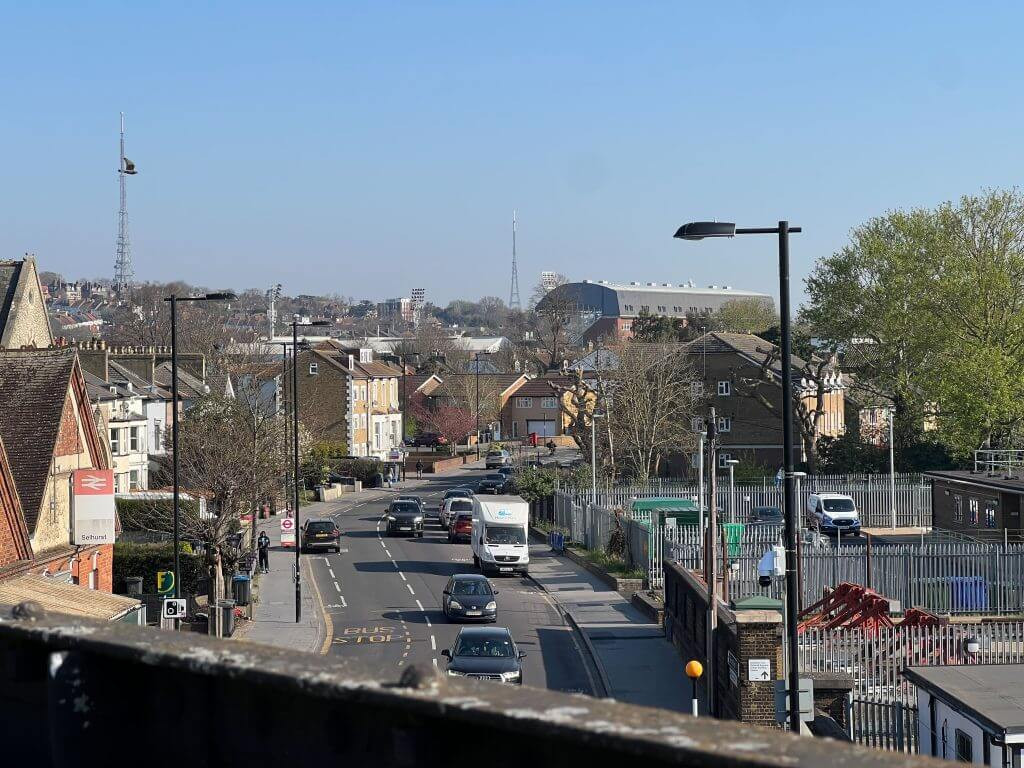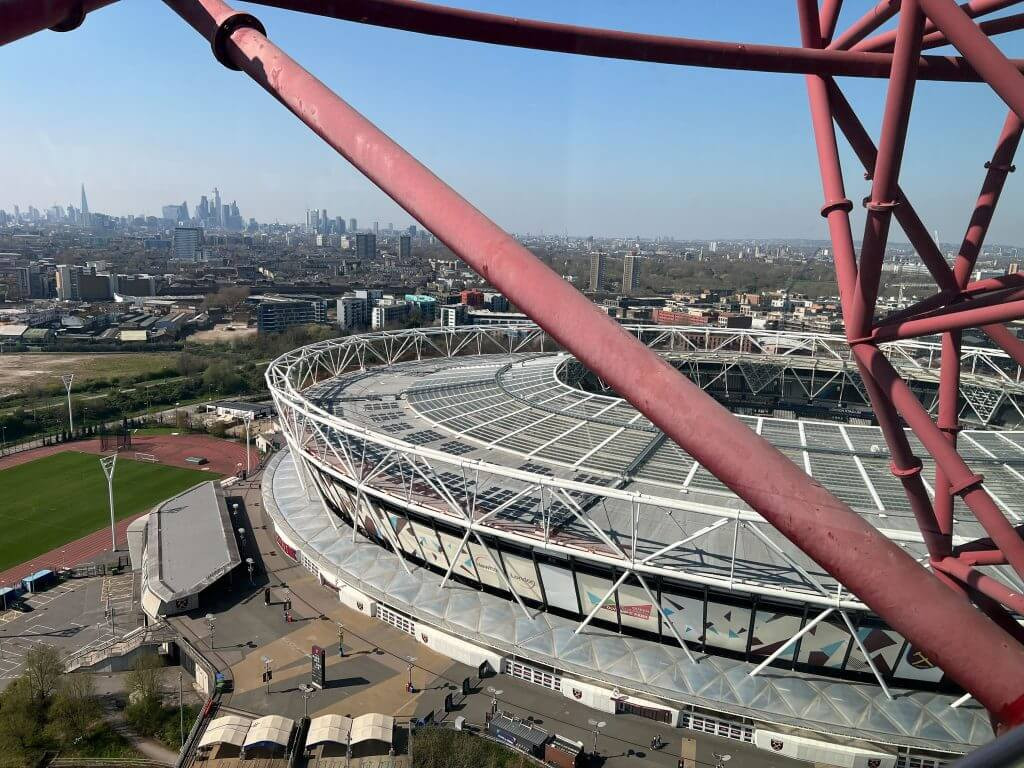Navigating London’s vibrant football scene can be tricky, especially for visitors. Are you struggling to locate all the Premier League and other football clubs in London? This article provides a comprehensive guide to the Map Of London Football Clubs, their stadiums, and how to reach them, ensuring you don’t end up miles away from the match. At CAUHOI2025.UK.COM, we aim to provide you with reliable and easy-to-understand information, so you can focus on enjoying the game. We delve into the locations of famous football grounds, including insights into transport and the surrounding areas.
Table of Contents
- London Football Club Map: An Overview
- Premier League Stadiums in London
- Navigating to Each Stadium
- Beyond the Premier League: Other London Clubs
- Historical Stadiums and Football Heritage
- Fan Experiences and Local Culture
- Stadium Tours and Museums
- The Future of London Football
- FAQ: Your Questions Answered
- Need More Help? Contact CAUHOI2025.UK.COM
1. London Football Club Map: An Overview
London is a footballing mecca, hosting numerous professional and amateur clubs. Understanding the map of London football clubs is essential for any football fan planning a visit. The city boasts multiple Premier League teams, each with a unique history and home ground. Let’s get you oriented.
2. Premier League Stadiums in London
London proudly hosts several Premier League teams, each with its iconic stadium. Here’s a closer look:
2.1 Arsenal – Emirates Stadium
Located in Holloway, North London, the Emirates Stadium is home to Arsenal Football Club. With a capacity of over 60,000, it’s one of the largest football stadiums in England. The stadium is easily accessible via the Arsenal tube station, making it a straightforward journey for fans.
2.2 Brentford – Gtech Community Stadium
The Gtech Community Stadium, home to Brentford FC, is located in Brentford, West London. Opened in 2020, this modern stadium holds around 17,250 fans. It’s a short walk from Kew Bridge station, offering convenient transport links.
2.3 Chelsea – Stamford Bridge
Situated in Fulham, West London, Stamford Bridge is the home of Chelsea Football Club. This historic stadium has a capacity of over 40,000. The nearest tube station is Fulham Broadway, a short walk from the ground.
2.4 Crystal Palace – Selhurst Park
Selhurst Park, located in Selhurst, South London, is the home of Crystal Palace Football Club. This traditional stadium has a capacity of around 25,000. Selhurst station is the closest train station, providing direct access.
2.5 Fulham – Craven Cottage
Craven Cottage, home to Fulham Football Club, is located in Fulham, West London, on the banks of the River Thames. This charming stadium has a capacity of around 25,700. The nearest tube station is Putney Bridge, followed by a scenic walk through Bishops Park.
2.6 Tottenham Hotspur – Tottenham Hotspur Stadium
The Tottenham Hotspur Stadium, located in Tottenham, North London, is one of the newest and most advanced stadiums in the world. With a capacity of over 62,000, it is the largest club stadium in London. White Hart Lane station is the closest Overground station, making it easily accessible.
2.7 West Ham United – London Stadium
The London Stadium, located in Stratford, East London, is home to West Ham United. Originally built for the 2012 Olympic Games, it has a capacity of 62,500 for football matches. Stratford station is well-connected, offering multiple transport lines.
3. Navigating to Each Stadium
Getting to these stadiums can be straightforward with the right information. Here’s a breakdown:
3.1 Using Public Transport
London’s extensive public transport network, including the Tube, Overground, and buses, provides convenient access to all the stadiums.
Arsenal (Emirates Stadium): Take the Piccadilly line to Arsenal station.
Brentford (Gtech Community Stadium): Use the National Rail to Kew Bridge station or the Overground/Underground to Gunnersbury.
Chelsea (Stamford Bridge): District line to Fulham Broadway station.
Crystal Palace (Selhurst Park): Southern Rail to Selhurst station.
Fulham (Craven Cottage): District line to Putney Bridge station, then walk through Bishops Park.
Tottenham Hotspur (Tottenham Hotspur Stadium): Overground to White Hart Lane station.
West Ham United (London Stadium): Central, Jubilee, DLR, and Elizabeth lines to Stratford station.
3.2 Planning Your Route
Use online tools like Citymapper or Google Maps to plan your journey, accounting for potential delays or disruptions. According to Transport for London (TfL), planning ahead can save up to 30 minutes on your journey.
3.3 Match Day Travel
Be aware that match days can be extremely busy. Arrive early to avoid crowds and potential delays. TfL often provides additional services on match days, so check their website for updates.
4. Beyond the Premier League: Other London Clubs
London’s football scene extends beyond the Premier League. Numerous other clubs compete in the English Football League (EFL) and non-league divisions.
4.1 Championship Clubs
Queens Park Rangers (QPR): Loftus Road, Shepherd’s Bush.
Millwall: The Den, Bermondsey.
4.2 League One and League Two
Charlton Athletic: The Valley, Charlton.
AFC Wimbledon: Plough Lane, Wimbledon.
Leyton Orient: Brisbane Road, Leyton.
Sutton United: Gander Green Lane, Sutton.
4.3 Non-League Clubs
Many non-league clubs offer a more intimate and affordable football experience.
Barnet: The Hive Stadium, Canons Park.
Bromley: Hayes Lane, Bromley.
5. Historical Stadiums and Football Heritage
London’s football history is rich and varied. While some older stadiums have been replaced, their legacy lives on.
5.1 Highbury (Arsenal)
Arsenal’s former home, Highbury, was renowned for its Art Deco architecture and intimate atmosphere. Though now converted into luxury apartments, its façade remains a historical landmark.
5.2 The Boleyn Ground (West Ham United)
West Ham’s former stadium, Upton Park, also known as the Boleyn Ground, held countless memories for fans. The site has since been redeveloped for housing, but its spirit remains in the hearts of West Ham supporters.
5.3 Wembley Stadium
While not a club ground, Wembley Stadium is the national stadium and has hosted numerous significant football matches, including FA Cup finals and international games. The original Wembley, known as the “Twin Towers,” was demolished in 2003 and replaced with the modern Wembley Stadium, which opened in 2007.
 View of Selhurst Park from Selhurst station
View of Selhurst Park from Selhurst station
6. Fan Experiences and Local Culture
Attending a football match in London offers more than just the game itself. It’s an opportunity to immerse yourself in the local culture.
6.1 Pre-Match Pubs
London is famous for its traditional pubs. Many fans gather in local pubs before and after matches to socialize and soak up the atmosphere.
The Highbury Barn (Arsenal): A classic pub near the Emirates Stadium.
The Eight Bells (Fulham): A popular spot near Craven Cottage.
The Toll Gate (West Ham): Close to the London Stadium.
6.2 Local Food and Markets
Explore local markets and food stalls for a taste of London’s diverse culinary scene.
Borough Market: Offers a wide variety of food options near London Bridge.
Street food stalls near the Tottenham Hotspur Stadium: Provide a range of cuisines on match days.
6.3 Community Engagement
Football clubs often play a significant role in their local communities, supporting charitable initiatives and youth development programs. Engaging with these activities can enhance your experience.
7. Stadium Tours and Museums
Many London football clubs offer stadium tours, providing a behind-the-scenes look at the facilities and history.
7.1 Emirates Stadium Tour (Arsenal)
Explore the Emirates Stadium, including the changing rooms, tunnel, and pitchside. The tour also includes access to the Arsenal Museum, showcasing the club’s rich history.
7.2 Stamford Bridge Tour (Chelsea)
Take a tour of Stamford Bridge and visit the Chelsea Museum. Learn about the club’s history, see the trophy room, and walk in the footsteps of legendary players.
7.3 Tottenham Hotspur Stadium Tour
Experience the state-of-the-art Tottenham Hotspur Stadium with a guided tour. Visit the changing rooms, press areas, and even walk on the Skywalk for stunning views of London.
8. The Future of London Football
London’s football scene continues to evolve, with new stadiums, infrastructure improvements, and growing fan bases.
8.1 Stadium Developments
Several clubs are planning stadium expansions or renovations to enhance the fan experience and increase capacity.
8.2 Community Initiatives
Football clubs are increasingly focused on community engagement, investing in youth programs, and promoting social inclusion.
8.3 Technological Advancements
New technologies are being integrated into stadiums to improve security, enhance the match-day experience, and provide fans with real-time information.
 View from the Orbit
View from the Orbit
9. FAQ: Your Questions Answered
Q1: Which is the easiest stadium to reach by public transport?
A1: Arsenal’s Emirates Stadium, with its dedicated Arsenal tube station, is often considered the easiest to reach.
Q2: Are there any accessible stadiums for wheelchair users?
A2: Most Premier League stadiums in London offer accessible entrances and facilities. However, it’s always best to check with the specific club in advance.
Q3: Can I buy match tickets on the day of the game?
A3: Buying tickets on the day is rare, especially for popular matches. It’s advisable to purchase tickets in advance through official club channels.
Q4: Are stadium tours available year-round?
A4: Stadium tours are generally available year-round, but schedules may vary depending on match days and other events. Check the club’s official website for the most up-to-date information.
Q5: What’s the best way to avoid crowds on match days?
A5: Arrive early, use public transport, and avoid peak travel times. Consider using alternative routes to the stadium.
Q6: Is it safe to walk around the stadium areas on match days?
A6: Yes, stadium areas are generally safe on match days, with a strong police presence and security measures in place.
Q7: Where can I find a map of all London football clubs?
A7: Online search engines and football-related websites often provide maps of London football clubs.
Q8: How early should I arrive at the stadium before a match?
A8: It’s recommended to arrive at least one to two hours before kick-off to allow time for security checks and finding your seat.
Q9: Are there family-friendly sections in the stadiums?
A9: Yes, most stadiums offer family-friendly sections with a more relaxed atmosphere.
Q10: What should I do if I encounter any issues at the stadium?
A10: Contact a stadium steward or security personnel for assistance.
10. Need More Help? Contact CAUHOI2025.UK.COM
Navigating the map of London football clubs can be an exciting adventure. At CAUHOI2025.UK.COM, we are dedicated to providing you with the most accurate and helpful information. If you have more questions or need further assistance, don’t hesitate to reach out.
Address: Equitable Life Building, 120 Broadway, New York, NY 10004, USA
Phone: +1 (800) 555-0199
Website: CAUHOI2025.UK.COM
We encourage you to explore more and discover the best of what London football has to offer. Whether you’re a die-hard supporter or a curious newcomer, there’s always something new to experience. Visit CauHoi2025.UK.COM today and let us help you plan your ultimate football journey!
We hope you found this guide helpful. Whether you’re planning a visit or simply curious about London’s football landscape, understanding the map of London football clubs is the first step to an unforgettable experience.